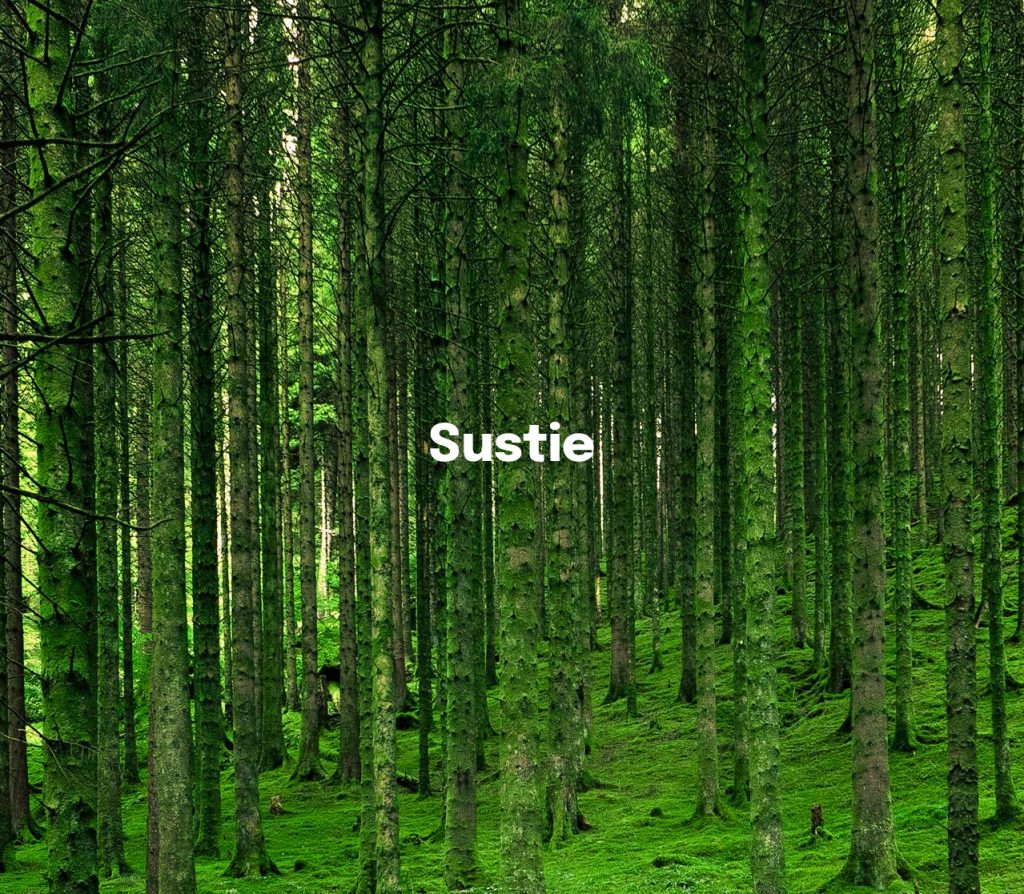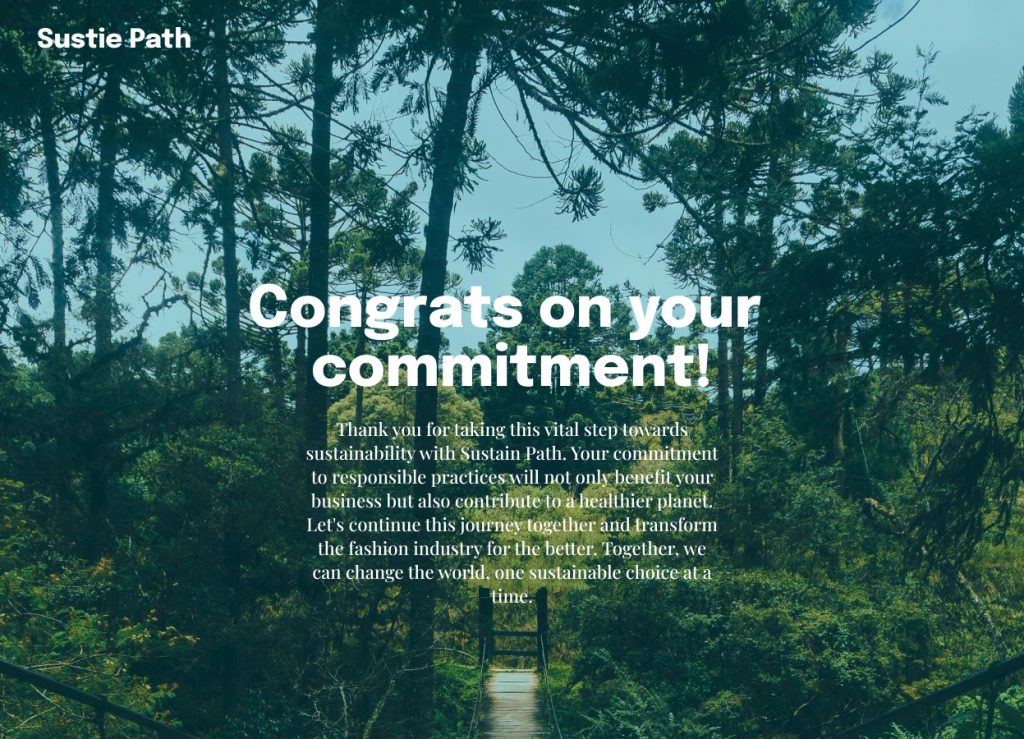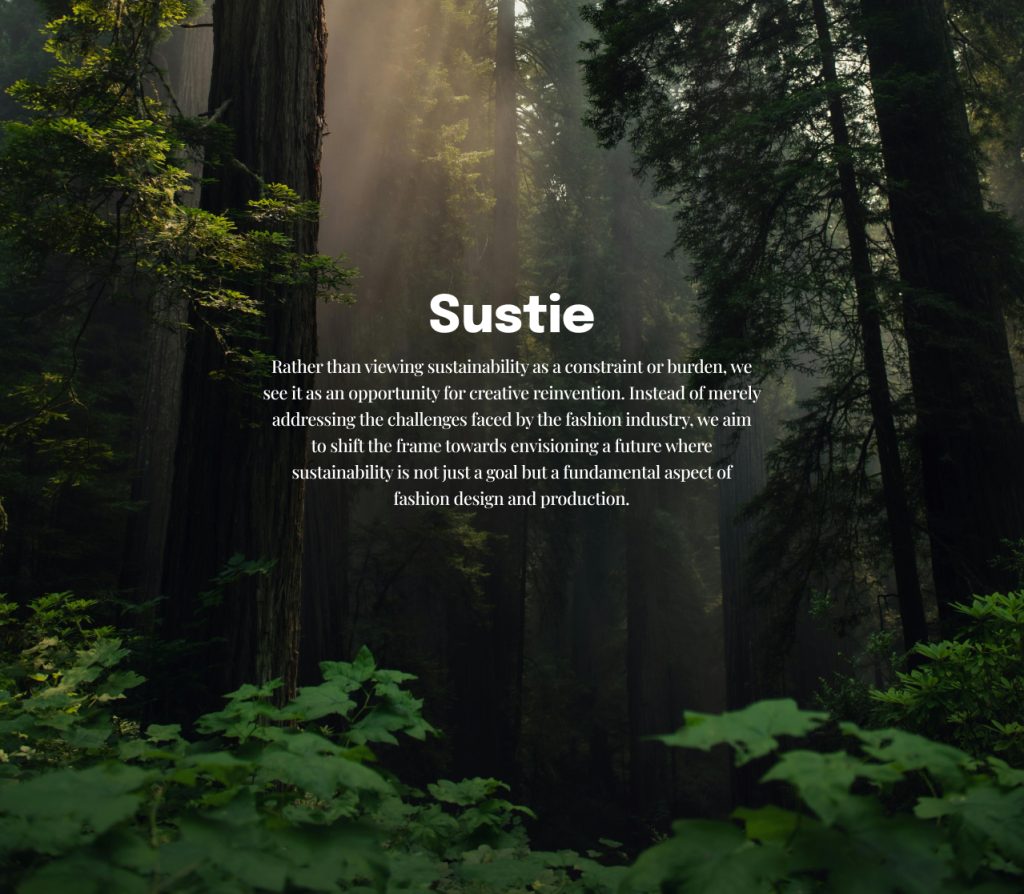SUSTIE
Scaling Climate Actions for the Fashion Industry Offsetting Carbon Emissions
Hyper Island - Final Project Internship

SUSTIE
Sustie internship brief
Introduction
Sustie is a tech company committed to advancing sustainability within the fashion industry. Our mission was to create a service that aids companies in selecting sustainable manufacturing practices and fabric options. While Sustie already provides a carbon offset service, they sought to expand their offerings. My role was to design a new service focusing on sustainability in manufacturing and fabric choices. This remote internship allowed me to work closely with cofounders Jon Handeland in Oslo and Christoffer Immanuel in Copenhagen.
Objective
A key aspect of our project involved navigating the complex legal landscape surrounding sustainability in fashion. With new legislation set to roll out over the next 6-8 years, many companies are struggling to stay compliant.
This project was particularly exciting for me, as it was my first experience leading as the sole designer. It offered a unique opportunity to merge my prior experience in fashion with my newly acquired tech skills. Moreover, my year at Hyper Island deepened my passion for addressing sustainability challenges and reframing problems to uncover innovative solutions.
Starting Process
Jon and I began by identifying the primary challenges companies face with upcoming regulations. Before diving into design, I conducted extensive research, reviewing numerous global reports on sustainable legislation.
The complexity of these requirements was daunting, and I noticed that many reports were biased by specific agendas, lacking a cohesive path for companies to follow. To address this, I decided to interview industry stakeholders to gain a clearer understanding of their current practices and future needs.
Action
I conducted interviews and surveys with over 10 professionals in fashion and sustainability. These discussions revealed that many sustainability officers were juggling multiple roles, such as buyers, with minimal support, time, and budget.
By combining insights from my research and stakeholder interviews, I reframed the problems into clear, actionable solutions. I then mapped out the pain points from the forthcoming legislation, using these insights to develop key recommendations for products that will help the industry navigate these challenges and prioritize the most critical legislation.
Insights
Using the mapping and data, I developed insights that were foundational to building the product. This was my first attempt at creating a product based on research insights independently, which I found extremely challenging. However, I embraced the challenge, and with Jon's positive encouragement, I managed to push through. Originally, my focus was on UX and creative research, reframing the data into insights for Sustie to build upon later. However, designing the product was a game-changer for me. I decided to create highfidelity wireframes, as I wanted to provide as much detail as possible to ensure a smooth handoff and facilitate the future development process.
SUSTIE
Research Process
UX and Service Design
During my internship with Sustie, I led the design of a new service aimed at helping fashion companies navigate sustainability challenges. My research process was fundamental to this project:
Problem Identification
I began by conducting extensive research, and reviewing a wide range of global reports and legislation on sustainability. This included analyzing complex legal documents and emerging regulations set to impact the fashion industry over the next 6-8 years. This thorough review helped me understand the various requirements and identify the primary challenges companies face with upcoming sustainability regulations.
Stakeholder Interviews
To gain deeper insights, I conducted interviews with over 10 professionals in the fashion and sustainability fields. These discussions revealed that many sustainability officers were struggling with limited support, time, and budget while handling multiple roles. This feedback highlighted the need for solutions that are not only compliant with legislation but also practical and resource-efficient.
Reframing Challenges
By synthesizing information from extensive research and stakeholder interviews, I reframed the problems into clear, actionable solutions. This step was crucial in pinpointing specific pain points related to forthcoming legislation and prioritizing critical areas for action.

Insight Development
Using the mapped pain points, I developed key insights that informed the design recommendations. These insights ensured that the proposed solutions were directly aligned with industry needs, focusing on helping companies effectively navigate the complex and often overwhelming landscape of sustainability requirements.
Conclusion
This comprehensive research-driven approach allowed me to create impactful design solutions that address real-world challenges. The project reinforced the importance of thorough research, legal analysis, and stakeholder engagement in developing user-centred, sustainable design solutions tailored to the needs of the fashion industry.
SUSTIE
Product Design One
Sustie Dashboard
The first design was a login dashboard focused on leveraging Sustie’s expertise with sustainable manufacturers and fabric suppliers. This tool is intended to assist fashion brands, from start-ups to medium-sized companies, in finding suppliers worldwide who already adhere to sustainable practices and offer sustainable fabrics.
The goal is to help brands implement sustainable practices without the need for extensive research on their own, including price comparisons, fabric options, and minimum orders per color or fabric. Additionally, I added a carousel gallery that consolidates the latest reports Sustie considers essential to stay updated. Transparency was a significant concern in my research, and many stakeholders expressed a desire for open discussions with peers dealing with sustainability. To address this, I suggested Sustie create a platform for transparent dialogue, which led to the creation of an open group chat on Slack, fostering an information-sharing community.

SUSTIE
Product Design Two
Sustie Path
The second design was a bespoke customer journey mapping software. My research highlighted the confusion surrounding where to begin and what to prioritize with the new laws and regulations. People wanted guidance on how and where to start.
I developed a form to gather critical information about a company’s current sustainability practices. Sustie would then use this information to create a tailored journey map, breaking down the overwhelming challenge into manageable, bite-sized goals, and providing companies with a clear roadmap from the first to the last action.

SUSTIE
Product Design Three
Sustie Automation Email System
The third design addressed a time-consuming problem for those juggling their primary job responsibilities with sustainability duties. A significant issue was gathering information on transparency metrics, such as electricity usage in retail stores, manufacturers, and fabric suppliers, along with data on carbon and water consumption.
I designed a login form where companies could input the details of whom they needed to contact and when. The emails would then be sent to Sustie, who would compile the information and send it back to the client. Although a simple idea, this system could save clients a significant amount of time. This feature could easily be integrated into the Sustie dashboard, but I chose to showcase it separately to highlight the design.
